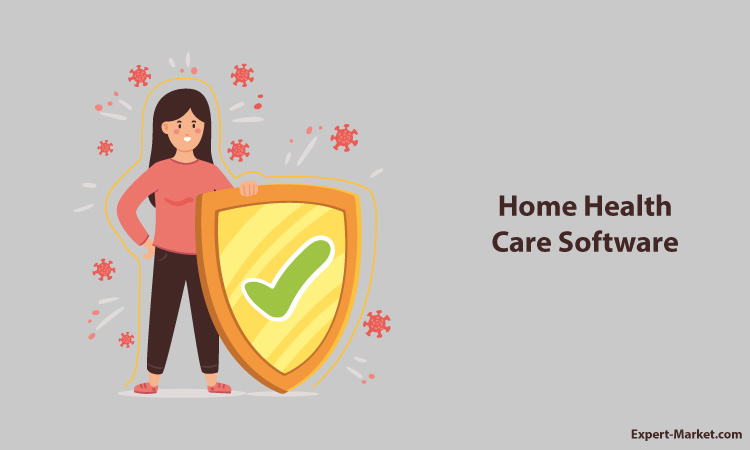In the modern era, where technology seamlessly integrates into various aspects of life, its role in healthcare, especially in-home health care, has become increasingly vital. Home health care software technology is revolutionizing how care is provided, enhancing efficiency, accessibility, and personalization. This article, drawing on the success story of a health tech innovator named Andrew, explores the necessities and importance of home health care software in contemporary healthcare practices.
10 important points:-
- Centralized Patient Data Management: Home healthcare software centralizes patient records, making it easier to access and update information, ensuring continuity and consistency in care.
- Enhanced Communication: It facilitates better communication between caregivers, patients, and healthcare providers, leading to improved coordination and understanding of care plans.
- Remote Monitoring Capabilities: The software allows for remote monitoring of patients, enabling healthcare providers to track vital signs and health status in real-time, which is crucial for patients with chronic conditions.
- Increased Efficiency: Automation of administrative tasks like scheduling, billing, and documentation improves overall efficiency, saving time and reducing errors.
- Customized Care Plans: Home healthcare software allows for the creation of personalized care plans based on individual patient needs and medical history, enhancing the quality of care.
- Telehealth Integration: Incorporates telehealth features, providing patients with access to healthcare professionals from the comfort of their homes, essential for those with mobility issues or in remote locations.
- Data Security and Compliance: Ensures the security and confidentiality of patient data, complying with healthcare regulations like HIPAA, thereby protecting sensitive information.
- User-Friendly Interface: Designed with a user-centric approach, making it easy for both healthcare providers and patients to navigate and use the software effectively.
- Real-Time Alerts and Notifications: Offers real-time alerts for medication reminders, appointments, and other important health-related notifications, ensuring adherence to treatment plans.
- Scalability and Flexibility: The software is scalable and flexible, able to adapt to the growing and changing needs of the home healthcare sector, making it a long-term solution for healthcare providers.
Transforming Home Health Care
The Emergence of Home Health Care Software
Andrew, an expert in health technology, realized the significant impact software solutions could have on home health care. His journey began with identifying the major challenges faced by caregivers and patients in home settings. Recognizing the need for robust, user-friendly, and comprehensive software, Andrew set out to bridge the gap between high-quality care and efficient management.
Streamlining Patient Management

One of the core functionalities of home health care software, as Andrew identified, is streamlining patient management. This software simplifies tracking patient health records, medication schedules, and care plans, making the information readily accessible to both caregivers and patients. Andrew’s vision was to create a platform that not only stores data but also provides actionable insights for better care.
Enhancing Communication and Coordination
Andrew emphasized the importance of effective communication in healthcare. Home health care software facilitates seamless communication between patients, healthcare providers, and family members. This aspect of the technology ensures that everyone involved in the care process is on the same page, leading to better-coordinated care efforts and improved patient outcomes.
Remote Monitoring and Telehealth Integration
A pivotal element in modern home health care software, as highlighted by Andrew’s work, is remote monitoring and telehealth capabilities. These features allow healthcare professionals to monitor patients remotely, providing timely interventions and reducing the need for frequent hospital visits. Telehealth integration has proven essential, especially in rural areas or for patients with mobility issues.
Data Security and Compliance
In developing his software, Andrew placed a high priority on data security and compliance with healthcare regulations. He understood that protecting patient information is crucial in maintaining trust and adhering to legal standards like HIPAA. His software was designed with robust security measures to safeguard sensitive health data.
Customizability and User-Centric Design
Another key aspect of home health care software is its customizability. Andrew’s software was developed with a user-centric approach, allowing customization to cater to the specific needs of different patients and healthcare providers. This flexibility ensures that the software is not just a one-size-fits-all solution but a versatile tool adaptable to various care requirements.
Training and Support
Andrew also recognized the necessity of providing comprehensive training and support for the software’s users. He implemented extensive training programs and customer support systems to ensure smooth adoption and usage of the software, thereby enhancing the overall user experience.
Conclusion
The journey of Andrew in the field of home health care software technology underscores the profound impact such innovations can have on healthcare delivery. His work highlights the importance of technology in making home health care more effective, coordinated, and patient-centric. As we move forward, the role of such technologies will undoubtedly become more integral in meeting the evolving demands of healthcare, solidifying their place as a necessity in the modern healthcare landscape.



























